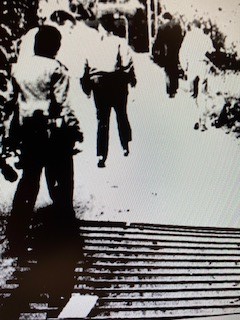Whenever I do something really stupid and foolhardy, I can take comfort in knowing I come by the impulse honestly. I descend from a long line of proud men whose pride has sometimes led them to undertake imprudent and reckless challenges. The line between glory and sheer stupidity can be difficult to discern. Unfortunately for myself and some of my forefathers, striving for greatness sometimes has the opposite result, often depositing one on the manure heap of ignominy.
Once I read a newspaper account of my Uncle Gus, who many generations ago was a baker in Los Angeles, California. It was 1908 and the city was still young and construction was booming. Everywhere, utility poles were erected and daring men, working high above the city, strung electric lines and telephone cables.
On the ground, residents watched the men work and marveled at their bravery. Everyone, except for my Uncle Gus, of course. He was not the least bit impressed. Spitting a large glob of tobacco juice onto the dusty ground, he told the assembled crowd, “They ain’t so special. I can climb a telephone pole as good as any lineman.”
The crowd jeered and mocked the 37-year-old baker, who was caked in flour and still wearing his apron.
Fixing his gaze on a tall, sturdy, steel pole at the corner of Amelia and Turner streets, Uncle Gus threw off his apron, grasped the pole and began his ascent. As promised, Gus scurried up the pole with twice the speed and skill of a lineman. Down below, friends and onlookers marveled at his nerve. As he neared the top of the pole, the crowd’s cheers ringing in his ears, Gus made plans to sit atop the pole and bask in his well-deserved glory.
Unaware that the lines the pole supported carried 1200 volts of electricity, “Gus threw one leg over one of the wires,” the newspaper reported. “In an instant blue flames shot out from his head, arms and legs and he fell from his lofty perch. He landed on a network of telephone wires and from them bounded to the pavement, thirty feet below. He lay as if dead and his friends notified the police station.”
Gus survived the daring stunt, suffering a compound fracture to his right leg and severe burns to his feet and hands. The glory that was nearly his evaporated in a brilliant burst of blue flames. Undoubtedly, this result caused Gus a great deal of consternation. However, Gus took comfort and was humbled by the reality that some benevolent hand reached out and broke his fall. Bounding off those telephone wires surely saved his life. Perhaps next time I’ll stick the landing, he thought, and all the glory and honor will be mine.


